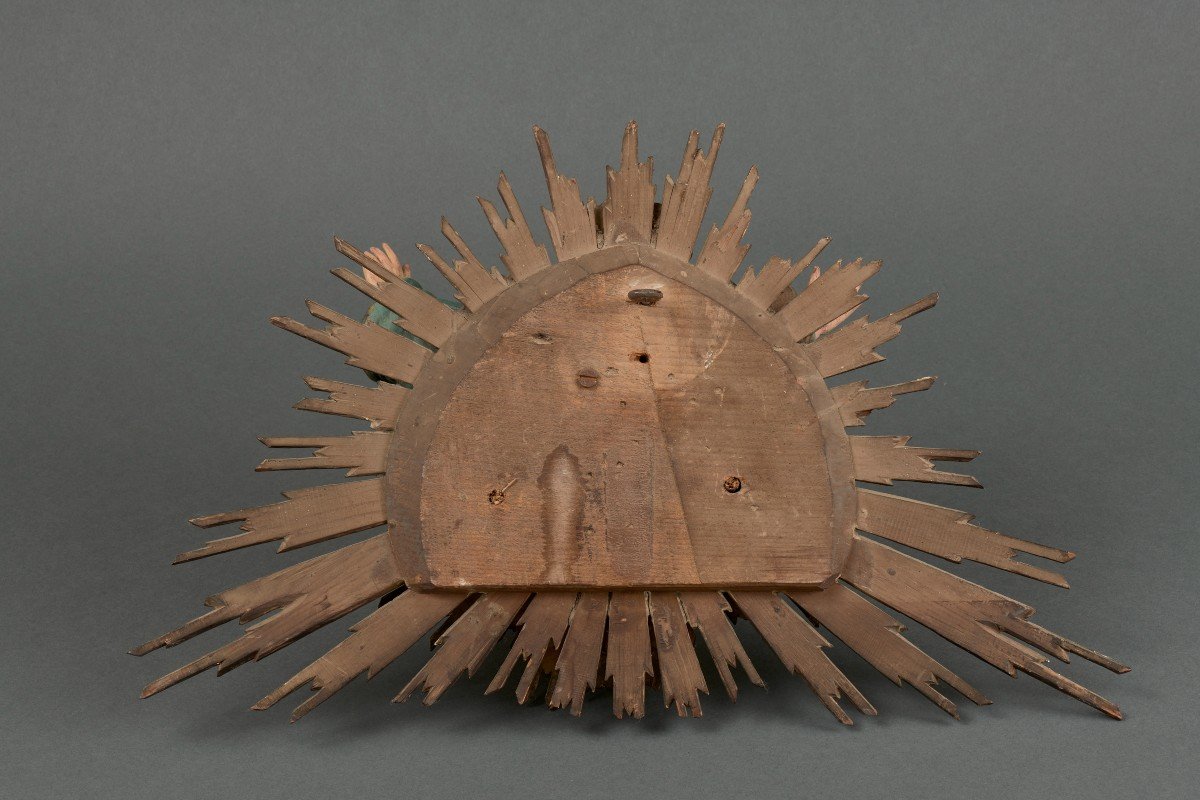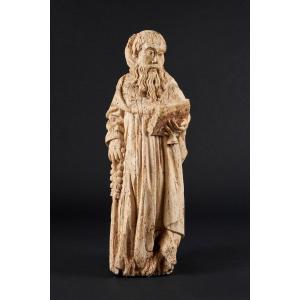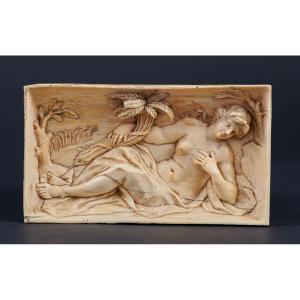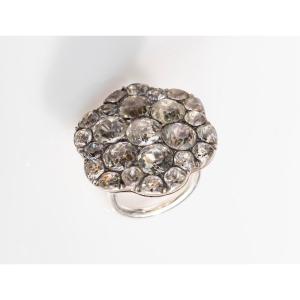Arms wide open, with a tender gaze, the Eternal welcomes with effusion the scene unfolding below before his eyes. This attitude is not unlike that of God the Father on the stucco decorations that adorned the domes of churches in the 18th century or even the crownings of altars. In this, our work can be compared to God the Father in Glory created by Carlo Sarti for the altar of the Santa Croce church in Rimini or, in Bologna, to the one created by Luigi Aquisti for the altar of S.S. Crocifisso del Castello. The format of our sculpture therefore invites us to consider that it could be a modello prior to the realization of these sumptuous and grandiloquent decorations. However, the detailed realism of the physiognomy of our protagonist and its rich polychromy enhanced by subtle glass eyes, on the contrary reveal the qualities of a work that is well finished. This unique coloring and the format of our sculpture then allow us to link it more definitively to another flagship sculpted production of the 18th century, that of Christmas crib.
If it was in the 18th century that the Nativity scene became the unexpected place of a truly sculptural abundance, it was at the beginning of the 16th century that for the first time small autonomous and mobile figures in wood or terracotta appeared. They are then generally placed in front of a painting reproducing a landscape as the background of the scene, all placed inside the churches. These sets are intended to express in a "living" way the birth of Christ in order to help the faithful to feel that they are part of Sacred History and to allow them to meditate as deeply as possible on the way that leads to Salvation.
If Naples was then the first center of production of these nativity scenes at the end of the 18th and 19th centuries, others also flourished further north in Rome, Bologna, but also as far as Austria, Spain and Portugal.
Within these compositions, God the Father takes his place above the Nativity, welcoming the birth of his son with open arms, as in the nativity scene created in 1840 by Anselm Sickinger or in the nativity scene of the Marquis de Belas in the Museo de Arte Antiga of Lisbon. The only typological equivalent to our work entirely in terracotta is today kept at the Museo Davia Bargellini in Bologna and attributed to a 18th-century Bolognese sculptor. However, its much lower quality and its very different style should make us give up considering a common origin for the two works. Moreover, the encrusted glass eyes of our figure are more reminiscent of those of the polychrome terracottas of great Neapolitan masters at the end of the 18th century such as Picano or Giuseppe Sanmartino. Our Eternal Father shares the same intensity as that of the marble Father made by Sanmartino for one of the churches in Naples. As for the stylistic treatment of our sculpture, the powerful realism of the features, and the detailed treatment of the beard and the hair here also evoke more the sculpture of southern Italy under Neapolitan influence, and finds an eloquent point of comparison in a God the Father in wood from Tricarico in Calabria.
Thus, our terracotta stands out as an extremely rare testimony of the Eternal Father within the famous and refined production of Neapolitan nativity scenes from the end of the 18th century, unique on the art market.
Complete entry available on request
©Sismann Gallery





































 Le Magazine de PROANTIC
Le Magazine de PROANTIC TRÉSORS Magazine
TRÉSORS Magazine Rivista Artiquariato
Rivista Artiquariato